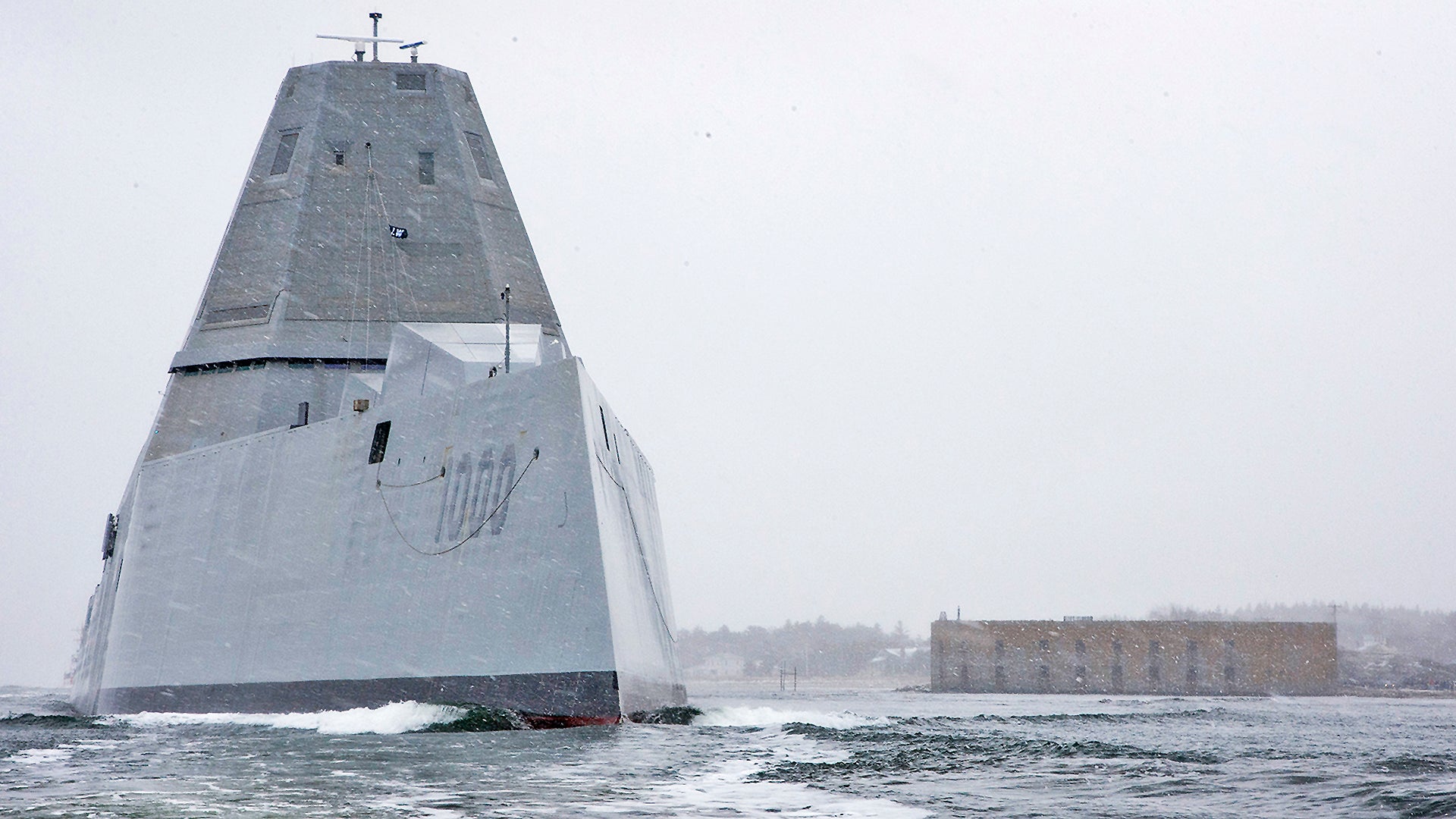Next month the first DDG-1000 Zumwalt class stealth destroyer will be commissioned into US Navy service. The program has been through three name changes since it began two decades ago and the design’s planned production run has been slashed dramatically from nearly three dozen hulls to a measly three. The truth is that the assault on the Zumwalts started long before production was cut. The ship you see today, even in all its exotic glory, is the sad result of a long series of illogical cost-cutting initiatives and spastic fiscal re-prioritizations by the Navy. These misguided measures left the final Zumwalt class design a truncated and far less capable mutation of how it was originally envisioned, and degradation to the class’ capabilities continue to this day.
The story of how the Zumwalt class came to be is long, complicated and meandering, but the ship’s core concept was spurned in the 1990s under the Surface Combatant For The 21st Century (SC21) initiative. Both a cruiser and a destroyer were to evolve from a similar SC21 design. The cruiser could replace the Navy’s aging Ticonderoga class cruisers and the slightly smaller SC21 destroyer would eventually augment, then replace the young rleigh Burke class. By 2002 the SC21 cruiser had been cut, and a new cruiser program dubbed the CG-X was started alongside the DD-X, which would eventually become the Zumwalt class.

Different by design:
The DDG-1000 is about one-third larger in displacement than the latest Flight IIA Arleigh Burke destroyers, clocking in at around 14,500 tons, and it’s is innovative in a number of ways. Its low observable (stealthy design, which includes multiple spectrum signature reduction, including electromagnetic emissions, radar, acoustic and infrared, is unprecedented on such a large scale.
The ship’s power plant is absolutely cutting-edge, as is its electric distribution system. Dubbed the Integrated Power System, the system uses the ship’s gas turbines and generators to produce massive amounts of electricity that can be distributed in a “smart” manner throughout the ship. Gone are the mechanical linkages between the ship’s turbines and its shafts, instead the screws are turned by electric motors.
Although this “hybrid” propulsion concept is not new, the totality of the system and the amount of power the DDG-1000 can produce is. In total a Zumwalt class ship can generate a ridiculous 78 megawatts of electricity, which is enough to power nearly 10,000 average american homes. Even while cruising at 20 knots the ship has a whopping 58 megawatts of reserve power. The Zumwalt’s Integrated Power System keeps that power in reserve for new technologies to be fitted in the future, like lasers and especially electricity-chugging electromagnetic railguns.

An EM Railgun is not just a land or surface attack weapon. Its super-high velocity and flat-shooting projectiles should be capable of blasting aircraft out of the sky at long-range, and it may even have the ability to engage fast-approaching ballistic missiles.
The Zumwalts will also mark the return of naval gunfire support to the Pentagon’s active weapons portfolio, a capability that has been lost since the retirement of the Iowa class battleships in the early 1990s. Although the ships will not pack anywhere near the heavy-hitting punch of the Iowa’s 16 inch guns, they will be able to sling 155mm rounds much further and much more accurately.
A slew of versatile munitions can be fired from DDG-1000’s Automatic Gun Systems (AGS), including GPS guided and rocket-assisted rounds, giving the Zumwalt’s high-volume and extremely accurate precision fire-support capability over a range of 75 miles (100 miles according to some sources).
Defense News Daily writes:
“The Zumwalt Class’ 2 Advanced Gun Systems (AGS) are each expected to fire up to 10 rounds per minute, using an automated magazine. The 304 round magazine has to organize and process ammunition and propellant changes from up to 38 pallets. Each pallet weighs about 6,000-pounds, holding 8 propelling charges, and 8 of the 230-pound, GPS-guided 155mm Long Range Land Attack Projectile (LRLAP) shells. The gun can take and fire up to 10 rounds per minute, which BAE explains as “140 to 160 projectiles in the air at once [with] multiple round simultaneous impact effects against single or multiple targets.” On the other hand, actually doing that would quickly exhaust this ship’s 2 magazines.”
Impressive to say the least.

The AGS allows the Zumwalt to support ground forces, including special operations teams which can be deployed on small boats through the ship’s stealthy rear ramp, without the need for close air support assets. The DDG-1000 will have those as well. The ship can support MH-60R Seahawk helicopters that can sling AGM-114 Hellfire missiles and laser-guided rockets, as well as byMQ-8B andMQ-8C Firescout unmanned helicopters carrying a similarly deadly payload and providing reconnaissance and network relay functions over long distances. Emerging capabilitieslike the tail-sitting TERN will only increase the Zumwalt’s punch and aerial data-collection capabilities.
Zumwalt also has 80 Mark 57 vertical launch cells that line her gunnels, each capable of carrying up to four Evolved Sea Sparrow missiles, a singleRGM-109 Tomahawk cruise missile or anASROC rocket-assisted torpedo. In the future, stealthy and far more capable missiles,like LRASM, could be fitted.
In addition, the Zumwalt class has some very high-end sonar gear, including hull-mounted high-frequency and mid-frequency sonar systems that are optimized to detect submarines and mines in the challenging littoral (near-shore) environment.

The Zumwalt will go to sea with a crew of about 150 people – less than half that of the smaller Arleigh Burke class. It is supposed to accomplish this feat primarily through automation, and acompletely new, open-architecture “electronic keel” has been designed into the ship. Dubbed the Total Shipboard Computing Environment, this network and computing system, will take advantage in leaps in automation while its massive coffin-like hardened servers fuse the ship’s sensor information, weapons capabilities, communications, navigation, engineering and even the ship’s predicted radar, acoustic and emissions signature at any given time into an integrated command and control interface. This information will be piped around the ship on common computing stations, so with the proper access, someone could control the ship’s navigation from engineering, or its weapons from the bridge. It is all very Star Trek: The Next Generation.
The nerve-center of the ship is also new. Gone is the classic low-ceilinged and vault-like Combat Information Center (CIC) of AEGIS equipped destroyers and cruisers. In its place is the SMC, the Ship’s Mission Center, which looks more like a starship command center than something found on a surface combatant.
Taken together, you get a ship that is intended to be able to fight far forward of any other major surface combatant in the Navy’s inventory. At least, that’s the idea. That capability could have wide implications for when fighting in ananti-access, area-denial scenario. In effect, Zumwalt is supposed to be able to bring its weapons, sensors and even special operations personnel to bear earlier in a conflict than its predecessors, all while ingesting information that it can feed back to less survivable weapons systems operating hundreds of miles further away from the enemy.

This all sounds well and good, but the Zumwalt also has its fair share of controversies, and not just those related to its $4B plus price tag, or its whopping $10 billion in development costs. Thestability of its unique tumblehome hull form, the size of the crew in relation to the size of the ship, their ability to handle battle damage in combat, and the durability of the ship’s composite superstructure are among other serious “nuts and bolts” issues raising questions about the DDG-1000. We will have to wait and see whether these concerns prove credible.
Old Mistakes Die Hard- The Zumwalt class lacks a close-in air defense weapon system:
The DDG-1000 does not have aclose-in weapon system (CIWS), used as a last line of defense against incoming anti-ship missiles. Today the US Navy uses variations of theRIM-116 Rolling Airframe Missile, now in its second block form, and updated versions of thevenerable Mk15 Phalanx gun system for this role. So why would the Navy omit such a critical system on such a valuable ship that will be fighting in the most inhospitable of combat environments?


One possibility is that the cost to integrate such a system into the ship’s stealthy slab-sided design was deemed too great by decision-makers in the Pentagon. The second possibility, one I find even more troubling, is that a dedicated CIWS was not included in the final Zumwalt configuration because the ship’s proposed “stealthiness” gave it greater survivability than its unstealthy counterparts, allowing for the omission of a CIWS as an acceptable risk. Wouldn’t such a statement do wonders when selling the program on Capitol Hill? Either way, the decision was incredibly near-sighted and potentially deadly.
The reality is that the Zumwalts, like all low-observable (stealthy) weapon systems, are NOT invisible. They are simply detectable at shorter ranges by certain sensors when compared with their more conventional predecessors. Low observability, especially for a ship, is a fantastic capability largelyproven by Lockheed’s Sea Shadow technology demonstrator in the 1980s and 1990s. But for a capable and well-networked foe, there are ways to detect and prosecute a missile attack on a ship at standoff distances that do not necessarily include radars–or at least the ones whose operating bands the Zumwalt class is designed to evade. For instance,long-range over-the-horizon radar systems that use low frequencies have the ability to detect stealth ships and aircraft under some conditions, and their fidelity is only increasing as more capable computer processing power becomes available. So unless these arrays are destroyed before Zumwalt moves into their detection range, assuming there is political will to do so, then detection and possible low-fidelity targeting of the stealthy ship is possible even over great distances.
Technology aside, an enemy may just get lucky, or use non-traditional forms of searching and tracking even the stealthiest of ships. Even with the Zumwalt’s low-observable features, engagement by anti-ship missiles–some of which travel at very high-speed and can be launched in large salvos–is possible. Additionally, if the ship were struck in another fashion, by a torpedo, mine, aircraft dropped munition or anti-ship ballistic missile, it is doubtful that its radar signature would stay highly masked and the Zumwalt’s visual and infrared signature would certainly blossom exponentially from the damage.
In those circumstances, damage control with the Zumwalt’s small crew would be bad enough. Not having a CIWS capable of rapid engagements, one that would work automatically as sea-skimming missiles homed in on a now unmasked and crippled ship, is a very empty-headed call.
In war the unexpected or unlikely is bound to happen, and vulnerabilities in any technology–no matter how advanced–can be exploited by the enemy without warning. It’s better to be safe than sorry when it comes to a critical last line of defense against increasingly prevalent air-breathing anti-ship missiles. Especially since these munitions are increasingly networked and able to search an area fortargets of opportunity, and engage those targets all on their own, even without the use of any kind of radar.
Anti-ship missiles are also increasingly “dual-mode” capable when it comes to their terminal homing abilities. This means that they have both radar and imaging infrared sensors to detect their target and prosecute their final attack. Even though the DDG-1000’s infrared signature is supposedly reduced, it’s not eliminated. The Zumwalt’s hot gun barrels and vertical launch system cells won’t help keep the DDG-1000 undetectable to infrared sensors during combat.
Some may say that cutting edge “soft kill” defensive capabilities have enough merit to omit a CIWS. These include utilizing the ship’s powerful AESA radar to shoot pencil thin beams of energy that fry a missile’s sensitive sensor components, lasers that dazzle electro-optical or infrared sensors, flares and smoke screens that misdirect missile seekers or obscure the ship’s infrared signature, and high-end electronic warfare systems that can confuse or blind the radars of incoming missiles. While countermeasure technologies are advancing more rapidly than ever, It’s doubtful that they are good enough to rely on them solely, especially when 150 sailor’s lives are at risk aboard America’s most expensive and supposedly capable surface combatant.
The enemy can adapt their weapons with hardened missile components and dual mode seekers, or even tri-mode seekers (adding electromagnetic homing capabilities) for terminal guidance. This is just the never ending saga of measure and countermeasure. And in a conflict with a peer-state, the enemy would be unlikely to fire a single missile. Instead, the Zumwalt should be prepared for multiple missiles of multiple types, flying diverse flight profiles and from multiple vectors, in an attempt to overwhelm a ship’s defenses. And since DDG-1000 will often be working alone, far ahead of the fleet, closer to shores where its weapons and sensors are optimized to perform, an overwhelming and multi-layered attack that comes at short notice with little time to react is very real possibility.
You would think that fixed versions of the Rolling Airframe Missile launcher that sit flush behind sliding doors on each side of DDG-1000s deckhouse could have been feasible, but as of now nothing like this has been described as existing on the design. One day Rolling Airframe Missiles may be adapted to be fired from the ship’s Mk57 vertical launch system, but this would put the missile at an energy disadvantage after launch and only four missiles per cell have been rumored to have been proposed. Seeing that the ship only has 80 VLS cells in total, that’s a lot of precious real estate to take up for just a handful of missiles. Still, there is no indication that this capability is being seriously looked at for DDG-1000. Even the mounting of aOerlikon Millennium Naval Revolver Gun in its stealthy housing would be an off-the-shelf CIWS solution for the Zumwalt class, and one that would make far more sense while being much less expensive than integrating a whole new missile concept with the ship.
As designed, the DDG-1000s were intended to pack a pair of 57mm Mk110 cannons which have limited aerial CIWS capabilities. Generally, this gun is capable, especially with P3 programmable ammo loaded in it, but it does not offer the reliability, maneuverability and rapid engagement capability of the RIM-116 RAM or even the independent operation and volume of fire of the 20mm Vulcan cannon equipped Phalanx.
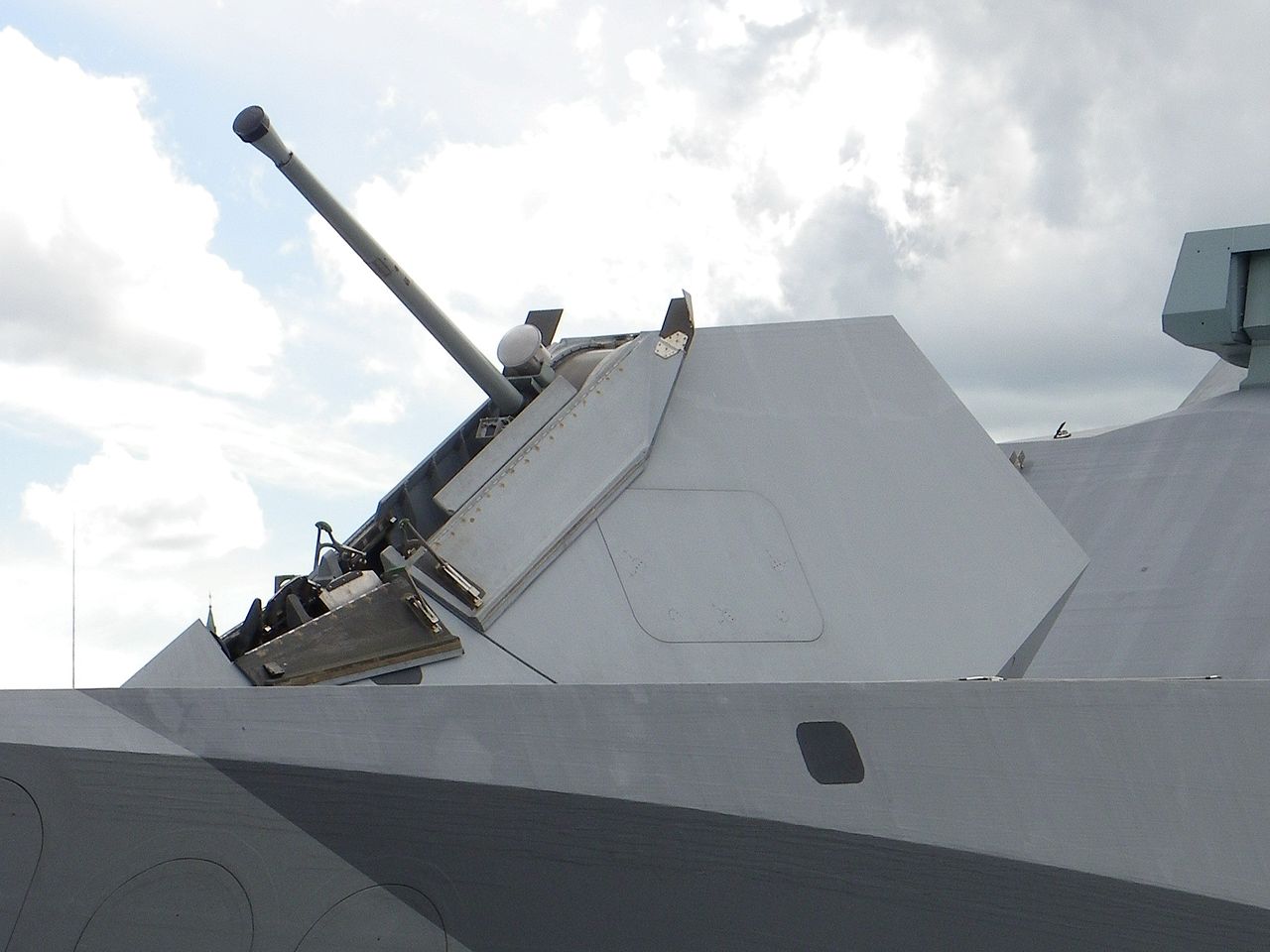
Even the diminutiveLittoral Combat Ship, which packs the same 57mm gun system, is equipped with a CIWS in the form of the Mk 15 Phalanx orSeaRAM–a self-contained version of the Rolling Airframe Missile system that merges a RAM magazine with the Phalanx’s mount and radar system. It seems more than just a little odd that an LCS will have better close-in protection against incoming air-breathing threats than the world’s most advanced and expensive surface combatant in a last line of defense scenario. Especially considering the DDG-1000 is meant to penetrate further into high-threat environments than any other surface vessel, while the LCS can’t even fight in medium threat environments without an AEGIS equipped destroyer or cruiser protecting it nearby.
But the omissions didn’t stop there. Even the limited CIWS capability offered by the Mk110 57mm cannonswere eliminated from the Zumwalt class baseline design in 2014. This late revision was justified by the Navy as a move that would save money and weight. Now the ships will get two cheaper andmuch smaller Mk46 30mm Bushmaster cannons
with minimal air defense capability that are largely curtailed to use defending the ship against swarming small boat attacks at very close ranges (about two miles or less) and have no real air defense capability. Even the 30mm’s effectiveness against swarming small boatsis being questioned when compared with the much longer-ranged 57mm guns that were intended for the ship.
The Zumwalt will also carryRIM-162 Evolved Sea Sparrow Missiles (ESSMs), four of which can be packed into a single vertical launch system tube. These maneuverable missile have close-in engagement capabilities, but the Navy has already come to terms with the fact that they cannot replace a CIWS. Flight IIA Arleigh Burke class destroyers were originally to be equipped without a CIWS, and many initially sailed without one installed, relying totally on VLS launched ESSMs for close-in to medium-range protection. This proved to be short sighted, and the ships have since been retrofitted with a proper CIWS system.
And the Navy’s commitment to dedicated CIWS systems has since accelerated. The Navy destroyers that are forward deployed to Spain, ones that often sail into the super anti-shipmissile engagement zone that is the Black Sea, are gettingSeaRAM systems installed in addition to the Phalanx CIWS they already carry.
Moral of the story? American destroyers are getting up-gunned with more CIWS capability, not the other way around.
The Zumwalt’s area air defense and ballistic missile defense capabilities were thrown overboard long ago:
It is logical to think that the Navy’s new stealth super destroyer would be well stocked with a variety of the latest surface-to-air missile technologies, creating a “layered air defense” ranging hundreds of miles from the ship. Every American Navy cruiser and destroyer built in the last 30 years has had this feature set at the heart of their multi-mission capabilities. Yet once again, when it comes to the stripped down Zumwalts, this is not the case.
These destroyers ended up being focused on the land bombardment and littoral dominance missions, not on air defense–even though these mission requires robust air defense capabilities to be successful. Area air defense and anti-ballistic missile patrol duty will instead be provided by the upcoming Flight III Arleigh Burke class ships and existing Aegis equipped surface combatants. In fact, while the DDG-1000 has most of the physical hardware needed for wide-area air defense missions, and even anti-ballistic missile defense, it runs non-Aegis software that does not have the capability to fire and use theSM-2/3/6 “Standard” series of missiles. Making things worse, half its intended radar system, one that would have made it the most capable air defense asset ever sent to sea, was gutted as a cost saving measure.

As a result, the DDG-1000 will only be stocked with Evolved Sea Sparrow Missiles (ESSMs) for self defense against aerial threats, vastly restricting the range and breadth of the ship’s counter-air potential. The RIM-162 ESSM has the ability to fly out to around 30 miles, which pales in comparison to the long-range and heavy hitting Standard missile series carried by the Navy’s existing AEGIS cruisers and destroyers.
Additionally, the large S-band SPY-4 radar array, originally designed to be 22 feet high and to work in concert with the smaller X-band SPY-3 radar array as part of the integrated Air and Missile Defense Radar (AMDR) system, was removed from DDG-1000. The reasoning behind this was to save on cost, but it also promoted theupcoming Flight III Arleigh Burke ships into the area air defense and anti-ballistic missile defense role exclusively.
This system would have allowed the Zumwalts to utilize SPY-4 for volume search, long-range tracking, ballistic missile discrimination and some missile communications and SPY-3 for horizon search, high-fidelity tracking, target illumination and missile communications simultaneously in an unprecedented, fused, “dual band” manner. Instead, the smaller SPY-3 radar was installed without its counterpart SPY-4, and the SPY-3 system was given software to perform both roles, although with severely degraded overall capabilities.

So between the undeveloped software, inability to fire Standard Missiles, and the omission of the originally intended radar suite, a ship that could have set a new standard in surface-based air warfare capability was drastically degraded to save a few bucks and to cement the Arleigh Burke Flight III’s future.
The strangest thing about this decision is that the full Dual Band AMDR system, with both arrays, will be installed on theUSS Gerald R. Ford supercarrier, so it is not like the system is no longer in development. Considering super carriers operate while cocooned inside a thickly layered air defense net, provided by an armada of Arleigh Burke and Ticonderoga class guided missile picket ships, all with magazines bristling with Standard missiles as well as ESSMs, and these floating air bases also pack around their own air force as well, this does not make a good case for the adequacy of the Zumwalt’s truncated anti-air sensor suite.
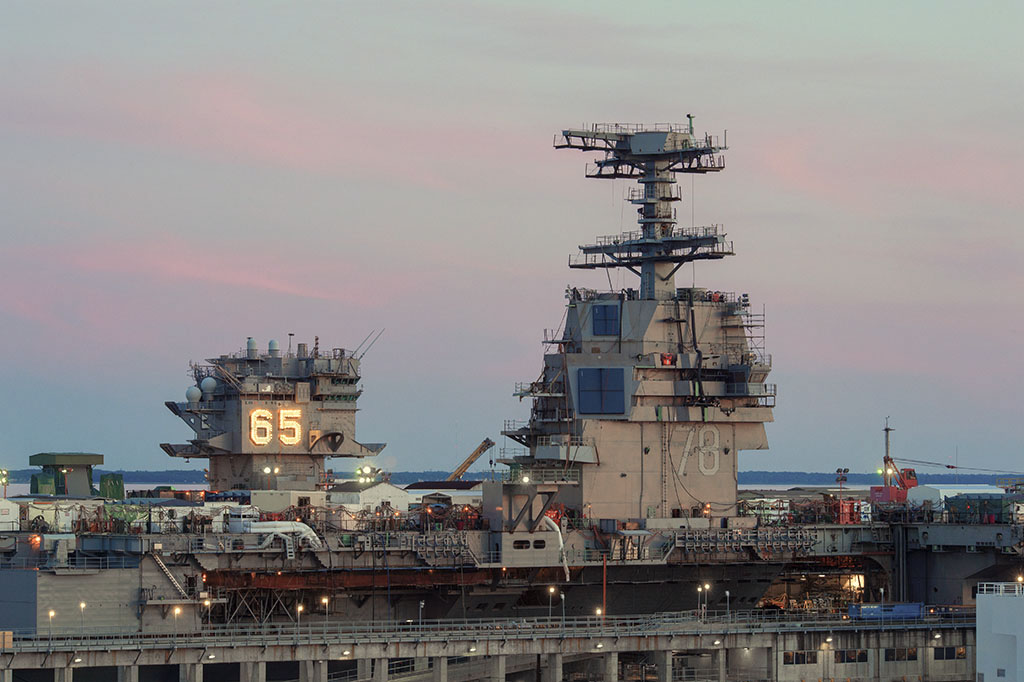
In reality, DDG-1000’s anti-air capability is defensive in nature, with only a limited capability for highly localized air defense within a couple dozen miles of the ship. This is a travesty, a missed opportunity that makes no sense, fiscally or tactically. A string of SM-2/3/6 and SPY-4 radar equipped DDG-1000s could create an “invisible sanitized corridor” stretching over many hundreds of miles, deep into denied territory. In this corridor ships and aircraft could transit in relative safety, deeply piercing the enemy’s anti-access/area denial bubble.
In addition, having missiles such as the SM-6 onboard DDG-1000 could offer stealthy fighter and bomber aircraft like the F-35, F-22 and the upcoming B-21 an extended magazine once their own limited weapons stocks run dry. Cooperative Engagement Capability and similar concepts could see stealthy allied aircraft targeting enemy aircraft deep in their own airspace and cueing DDG-1000-based missiles onto those targets. In fact, remote pairing between the F-35 and the SM-6 was just tested successfully. The SM-6, with its secondary surface and ground attack capabilities, could even allow stealthy aircraft to remotely target boats and ground targets far from shore for these missiles to strike after they were ordered to be launched from a DDG-1000. This hunter-killer concept would dramatically increase the tactical options for low observable aircraft already at risk over enemy territory, and it’s a capability only the Zumwalts could provide.
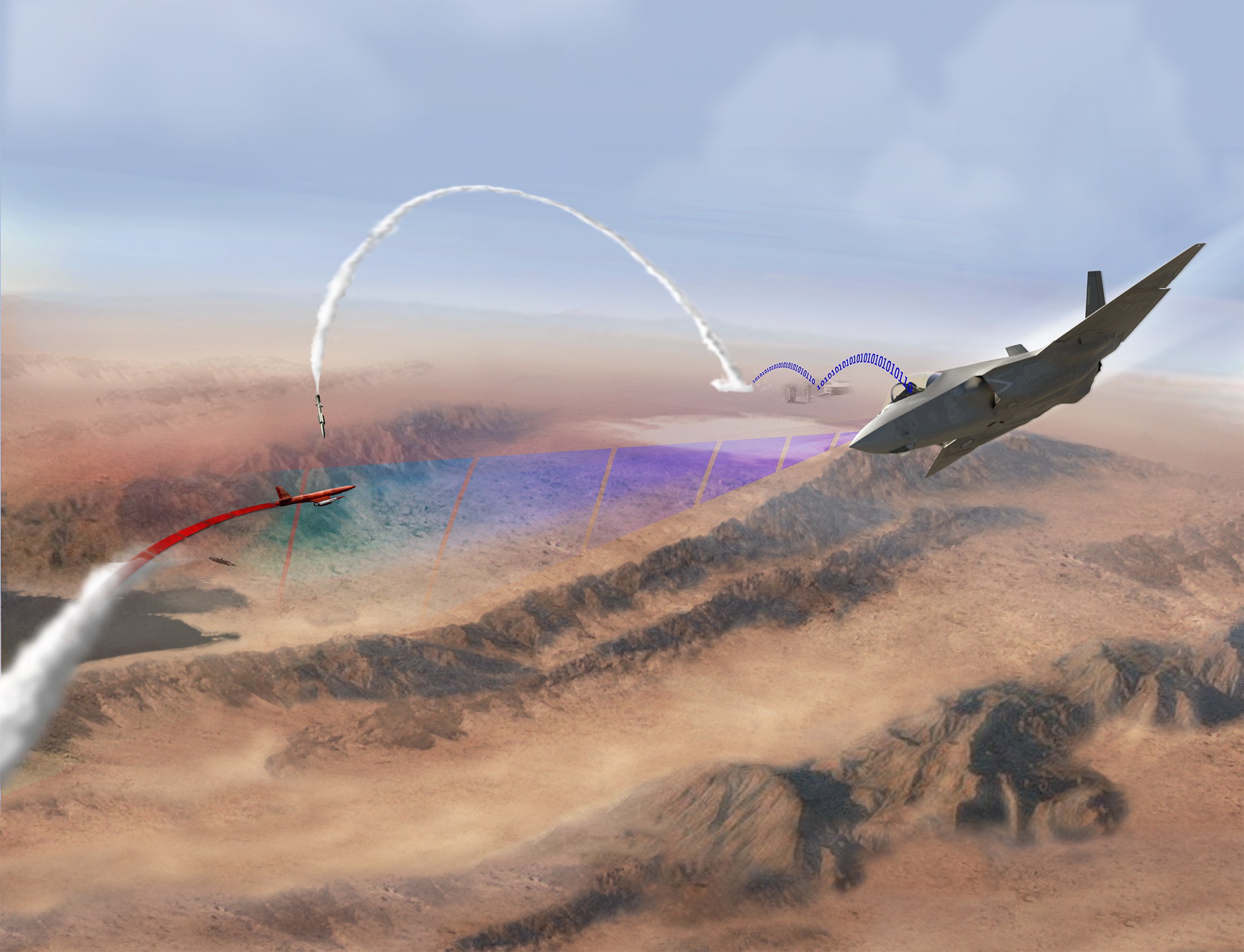
Although the idea of using the DDG-1000 as an “arsenal ship” is promising, and although the DDG-1000 is perfectly suited for providing this capability to stealthy combat aircraft as both will operate closer to threats than their conventional, non-stealthy counterparts, there is one problem. Filling the Zumwalt’s limited VLS “real estate” (80 VLS cells vs 96 on the Arleigh Burke class and 122 on the Ticonderoga class) with missiles that the ship cannot provide targeting and guidance for organically is unlikely to happen. If the ship had its full radar and software suite available, it would be able to employ these missiles on its own. Making them available for remote targeting by another player on the battlefield would be no big deal. Stocking them just for this purpose is highly unlikely.
In the not so distant future, ballistic missile defense will not just be about protecting a region from a rogue attack, it will also be about protecting the anti-ballistic missile ship, and its floating companions, themselves. In a world whereanti-ship ballistic missiles are becoming a reality, ballistic missile defense (BMD) capabilities will become more of a defensive necessity for flotillas than a “regional defense mission” of its own. The full SPY-3/SPY-4 radar suite, with SM-2/3/6 capabilities would have allowed the Zumwalt class to simultaneously watch for incoming ballistic missiles as well as air breathing threats (aircraft, cruise missiles etc), and engage those threats over long distances if need be.
Today, Aegis ballistic missile defense equipped cruisers and destroyers largely are unable to execute both the air defense and anti-ballistic missile defense function at the same time, although the Flight III Arleigh Burke class, which will feature a full and updated version of the AMDR radar known as the SPY-6, will be able to. But seeing as DDG-1000 will often operate independently from larger flotillas, it will have to go about its business without an anti-ballistic missile “umbrella” overhead, even while operating deep into denied territory.
Bad decisions neutered the Zumwalt class, but a study with questionable conclusions doomed it:
The DDG-1000’s area air defense and anti-ballistic missile capabilities were abandoned slowly over time. Originally the DG(X), which became the Zumwalt class, was supposed to have a larger air defense focused sister class, the CG(X). The designs were very similar between the two types but the cruiser was to be larger with a greater focus on air defense, but the CG(X) was cancelled in 2010, leaving just the Zumwalt class to fend for itself.
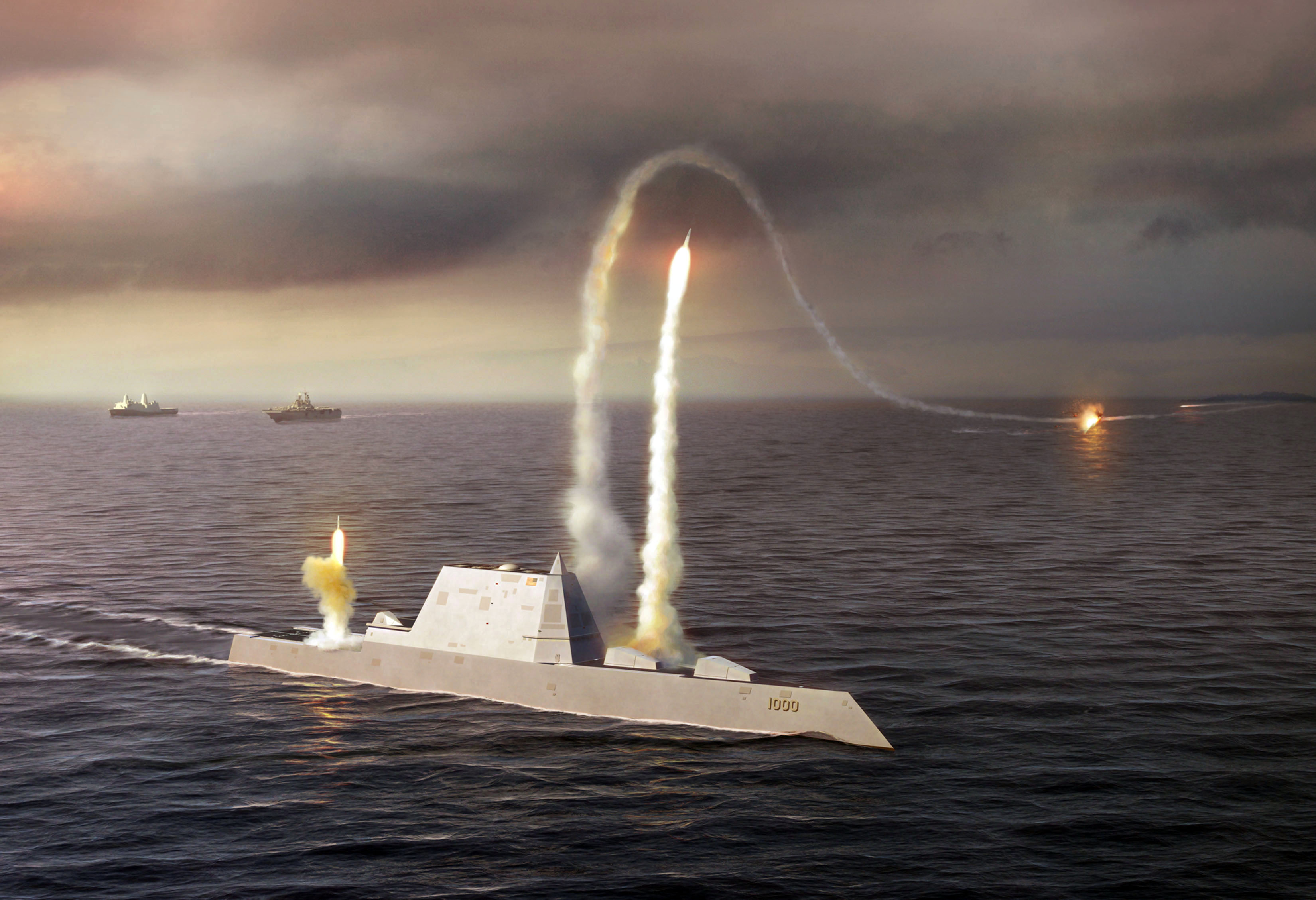
Yet even the Zumwalt class was truncated in size from its original concept under the DG(X) initiative. Magazine size in particular was slashed from between 116 and 128 VLS cells down to just 80. What’s most troubling about this move is that the Mk57 VLS cells on the Zumwalt class are larger than the Mk41 cells found on today’s AEGIS cruisers and destroyers. This means that larger and even longer-range surface-to-air weaponry and ballistic missile interceptors could have filled many of these cells, giving the ship a unique long-range air defense capability to match the abilities of its SPY-3 and SPY-4 radar systems. As mentioned earlier, this radar suite didn’t pan out either.
The cancellation of the CG(X), and the limiting of the Zumwalt class’ production numbers to just three ships while curtailing their baseline capabilities was spurred by a 2009 radar/hull study initiated by the Navy. The study pushed for an outgrowth of the already fairly over-built Arleigh Burke class destroyer to accommodate a larger radar suite, a more advanced combat system, and much more electrical power generation, among other upgrades. The study concluded that the Navy should ditch the Zumwalt’s potentially revolutionary design and unique capabilities and stick with a 30 year design that would offer lower risk and would be more cost effective, stating that each new Flight III Arleigh Burke class would cost less than $2B each.
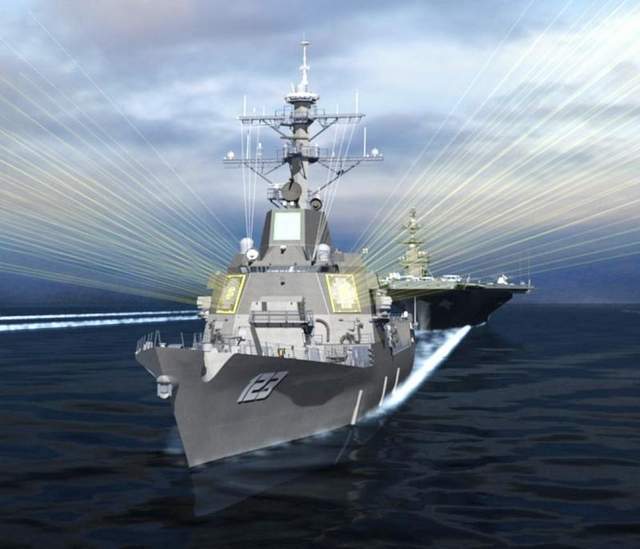
This report for which the Navy hung its future surface combatant capability upon, has since proven to have been less than accurate or truthful. In 2012 theGAO concluded that:
“The Navy relied on its 2009 Radar/Hull Study as the basis to select DDG 51 over DDG 1000 to carry the Air and Missile Defense Radar (AMDR) as its preferred future surface combatant—a decision that may result in a procurement of up to 43 destroyers and cost up to $80 billion over the next several decades. The Radar/Hull Study may not provide a sufficient analytical basis for a decision of this magnitude. Specifically, the Radar/Hull Study:
- focuses on the capability of the radars it evaluated, but does not fully evaluate the capabilities of different shipboard combat systems and ship options under consideration,
- does not include a thorough trade-off analysis that would compare the relative costs and benefits of different solutions under consideration or provide robust insight into all cost alternatives, and
- assumes a significantly reduced threat environment from other Navy analyses, which allowed radar performance to seem more effective than it may actually be against more sophisticated threats.
The Navy’s planned production schedules of the restart DDG 51 ships are comparable with past performance and officials told us that hull and mechanical systems changes are modest, but these ships will cost more than previous DDG 51s. A major upgrade to the ship’s combat system software also brings several challenges that could affect the restart ships, due in part to a key component of this upgrade that has already faced delays. Further delays could postpone delivery to the shipyard for the first restart ship, and could also jeopardize the Navy’s plan to install and test the upgrade on an older DDG 51 prior to installation on the restart ships. This first installation would serve to mitigate risk, and if it does not occur on time the Navy will be identifying, analyzing, and resolving any combat system problems on the first restart ship. Further, the Navy does not plan to fully test new capabilities until after certifying the upgrade as combat-ready, and has not planned for realistic operational testing necessary to fully demonstrate its integrated cruise and ballistic missile defense performance.
The Navy faces significant technical risks with its new Flight III DDG 51 ships, and the current level of oversight may not be sufficient given these risks. The Navy is pursuing a reasonable risk mitigation approach to AMDR development, but it will be technically challenging. According to Navy analysis, selecting the DDG 51 hullform to carry AMDR requires significant redesign and reduces the ability of these ships to accommodate future systems. This decision also limits the radar size to one that will be at best marginally effective and incapable of meeting the Navy’s desired capabilities. The Navy may have underestimated the cost of Flight III, and its plan to include the lead ship in a multiyear procurement contract given the limited knowledge about the configuration and the design of the ship creates potential cost risk. Finally, the current level of oversight may not be commensurate with a program of this size, cost, and risk and could result in less information being available to decision makers.”
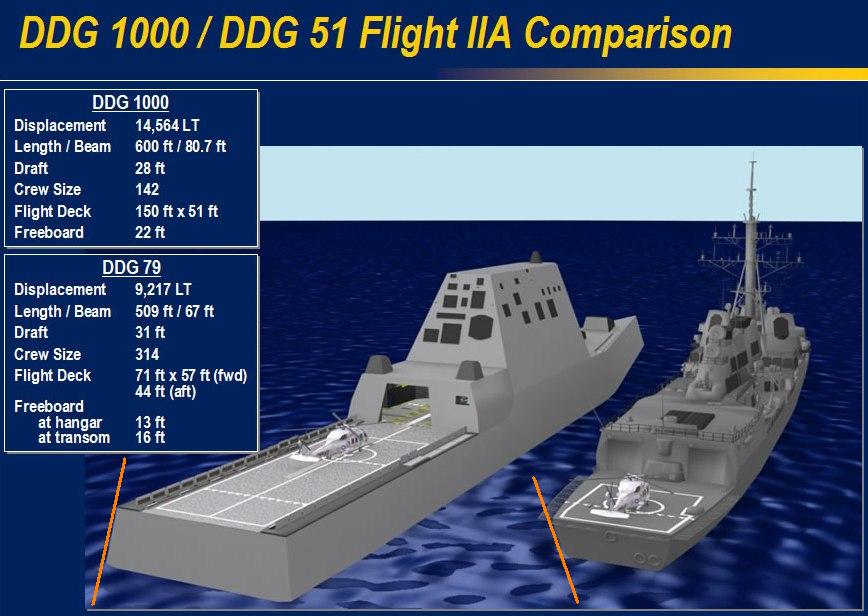
Since the GAO published its counter to the Navy’s 2009 radar-hull study, the cost of Flight III Arleigh Burke class hasremained a key uncertainty, and much of the risk that the Navy was trying to avoid by going with an existing design over DDG-1000 will become less relevant as the Zumwalt class rapidly matures. Not only that, but under the current plan, the Arleigh Burke class issupposed to remain relevant through 2072, at which time the basic design will be more than 80 years old. Considering how quickly potential peer-state competitors’ military capabilities are advancing around the world, this seems like an absurd proposition.
These new Flight III Arleigh Burke class destroyers, of which at least 22 are slated to be built (likely many more), will have very limited room for growth and maynot be able to accommodate disruptive technologies like railguns in the future. So what the Navy gets with this restart and revamping of an old class is a fully maxed-out design on day one–a ship that will struggle to adapt to new threats and that is not nearly as survivable as the much larger, more adaptable and stealthy DDG-1000.
The worst part of this blunder it is that these two designs should not have to be pitted against each other. They are much more effective working cooperatively as part of a larger high-low capability mix of naval strategy. Producing a smaller number of Zumwalt class destroyers while also producing new Arleigh Burke class destroyers seems like a fairly equitable trade off, especially since the DDG-1000’s development costs are already sunk, even if such a plan results in a slight overall active hull number decrease.

If the Navy had procured a proper frigate instead of the Littoral Combat Ship, one that is armed with Evolved Sea Sparrow Missile and can defend itself in medium threat environments, a plan to procure both the Zumwalt class and more Arleigh Burke class destroyers would be much more acceptable. Although it may mean slightly fewer hulls in the water overall, a new frigate could pick up many of the lower-end roles currently performed by Arleigh Burke class destroyers. This would free the Navy’s cruisers and destroyers to concentrate on higher-end tasking.
Ongoing design sacrifices:
Although the DDG-1000s will be tougher to detect by enemy sensors than their less stealthy progenitors (about 50 times less visible on radar according to the Navy, although this figure is clearly anecdotal), they will also be operating much closer to enemy sensors. As a result, these ships will have to pay close attention to the electromagnetic spectrum around them and will have to use their incredible processing power to best predict the edges of the enemy’s detection capabilities. Many variables go into this, including the configuration the ship is in at any given time, the environment around it, what type of emissions it is putting out, what type of electronic countermeasures are being used, and even at which aspect of the ship is being presented to each known enemy sensor.
Passive sensors are far more problematic, and it is nearly impossible for Zumwalt to know where they are and if they are tracking her. These include electromagnetic sensors that can detect radar and communications emissions, and in some cases triangulate them to a geographical position. DDG-1000 surely has the ability to actively mask its radar and communications transmissions usinglow-probability of intercept tactics, but these tactics are not perfect. This is especially true considering how slow the ship moves compared to, say, a stealthy aircraft; exposure time is just far greater. These passive sensors can also include infrared scanning and electro-optical devices, and maybe most importantly, acoustic sensors. The Zumwalt is known to have a chilled exhaust and a very quiet audible signature, some have even posited it is akin to an Ohio class nuclear ballistic missile submarine, though such a claim is doubtful.
While details about the specific nature of Zumwalt’s various signatures are classified, it’s clear that when it comes to radar visibility, the ship has devolved considerably over the years. What was once a very stealthy design has been the victim of a never ending list of compromises. In recent years these compromises have become almost comically absurd, and now it seems that the Navy is willing to bolt anything onto the the class in order to save money.
First off, USS Lyndon B Johnson (DDG-1002), the final ship in the tiny class, will notfeature the stealthy composite deckhouse that is such a key feature on the baseline DDG-1000 design.Instead it will be made out of steel. This not only has the potential todrastically increase the ship’s radar signature, it will also greatly increase weight exactly where you don’t want it on a ship (high up) that already faces questions about its stability. The Navy says that, even with these design changes, the ship’s weight distribution and radar signature is “acceptable.” Exactly what that means is unclear.
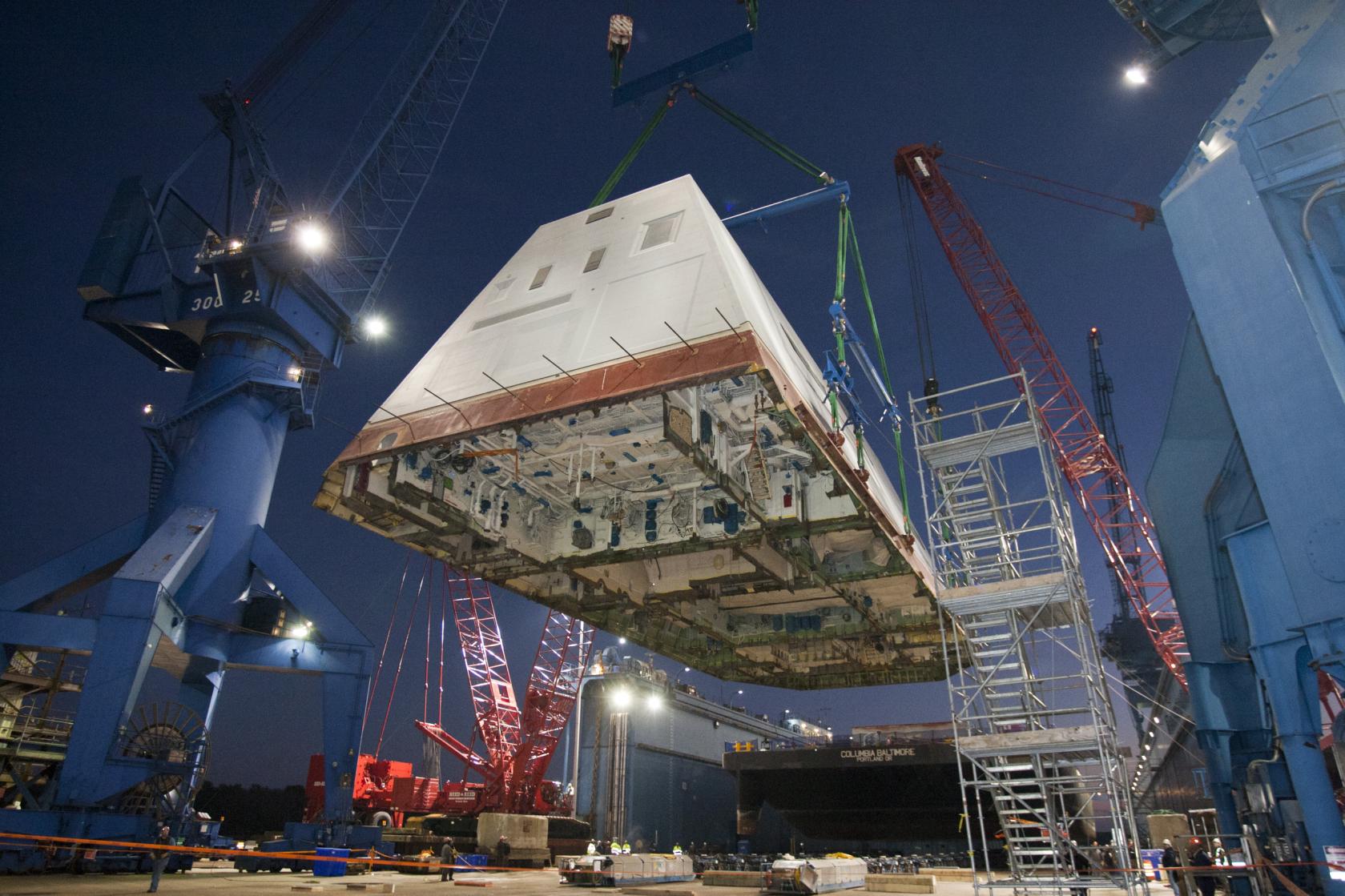
Enjoy the Zumwalt’s clean lines now because they are about to change significantly. In a race to save money, the Navy has decided not to embed a bunch of sensors and communications infrastructure into the ship’s slab-sided deckhouse. Instead they will be bolted on as if they were an afterthought, making a $4B+ stealth ship, well, less stealthy to say the least.
The Navy toldUSNI News last march the following:
“The current DDG-1000 topside configuration is a performance and weight improvement and cost-avoidance initiative. This configuration adds a mast to the forward part of the deckhouse and relocates several communications systems including Ultra High Frequency (UHF), Very High Frequency (VHF), data link and the wind sensor from the deckhouse to the mast. This configuration will be present on all three ships and provides improved performance redundancy, cost avoidance and weight reduction, while still meeting Key Performance Parameters (KPP) requirements for Radar Cross Section (RCS).”
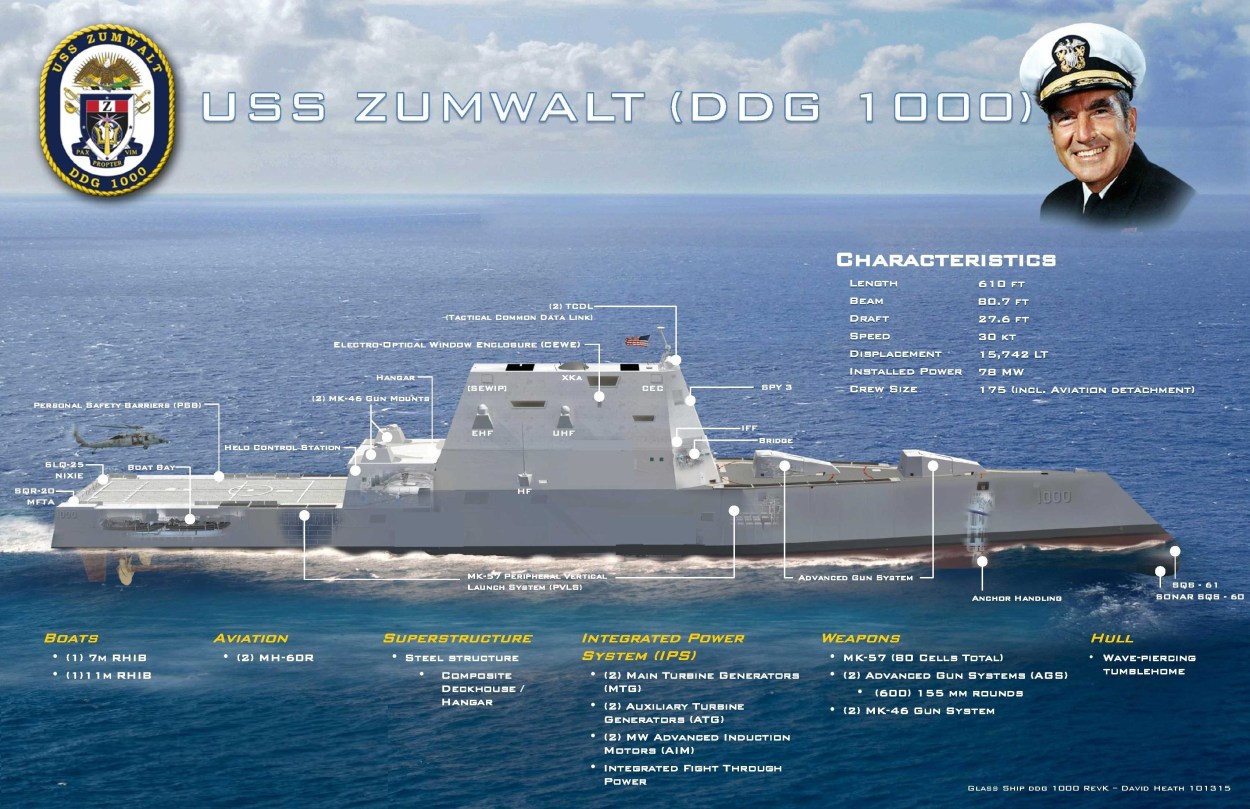
The bottom line is that DDG-1000 is still stealthy, but not nearly as stealthy as it could be, or as it was envisioned to be. Just because a 600 foot warship has the radar signature of a fishing trawler, it doesn’t mean that it can’t be seen or attacked. Taiwan did just that by accident just months ago.
It’s disheartening that the Navy has bet so much on the Zumwalt’s low observable design, and paid huge dollars developing it, but then has not done everything it can do maintain and or improve upon it. In fact, they have done the exact opposite.
A mismatched mash-up of capabilities:
The various omissions in the Zumwalt’s capability have resulted in a ship that is focused on chucking cruise missiles and sending GPS guided cannon shells dozens of miles inland. But if the Navy wants a stealth Tomahawk chucker, guess what? They already have four of them with far more vertical launch cells than the DDG-1000 has. These are the convertedOhio class nuclear-powered guided missile submarines (SSGNs). In the coming years, Virginia class nuclear fast attack submarineswith extended payload modules will take up this role as the four converted Ohio class SSGNs are retired.
Minus its 155mm guns, has the stripped-down, anti-air mission-less Zumwalt become a far more vulnerable above-water guided missile submarine? A stealthy anti-submarine, special operations, and land attack arsenal ship? If so, why not build more submarines instead? They would be far more survivable and can stay on station much longer than the Zumwalt.
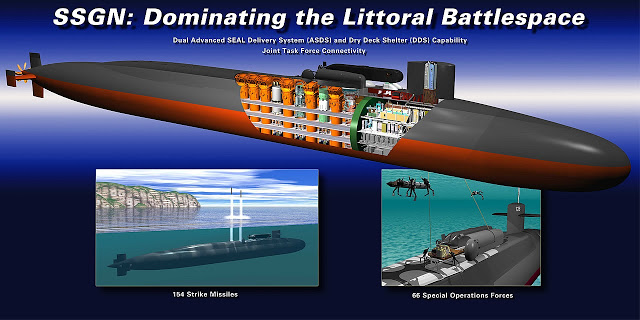
Even with the Zumwalt’s more limited set of missions, the ships are supposed to do something a submarine cannot, they have the ability to deliver special operations forces via helicopter deep into enemy territory and support them directly with long-range gunfire… Theoretically at least.
Yet, even this mission set is problematic. While the destroyer may be stealthy, the manned helicopters it carries (MH-60R/S) certainly aren’t. This mismatch in capabilities limits the vessel’s ability to differentiate itself from what a submarine could offer in anything but a low-threat environment without major external third-party support (jamming, SEAD, escort etc). Pairing the DDG-1000 with a stealthy helicopter would allow it to operate much more independently, especially in the “over the beach” special operations support role. Independence of operation may not be a choice, considering the ship’s capabilities are unlike any other in the fleet and it is designed to go where other surface combatants cannot.
We do know thatstealthy Black Hawk variants exist. Procuring a number of these aircraft for use with the Zumwalt class would at least offer a differentiation between what the ship can provide, compared with submarines, when it comes to special operations support missions.
The idea of the Navy fielding such a unique capability is unlikely as theservice’s two special warfare helicopter squadrons have already been cut down to just one to save money, and they can’t even get their aging HH-60Hs replaced with new Seahawks. There is a chance that this mission could be provided by the Army’s 160th Special Operations Air Regiment who are known to already operate these rare aircraft. Their pilots are often deck qualified as well, but there has been no mention of a serious plan to match these two stealthy assets up together even on a case-by-case basis. Doing so would at least lend more credibility as to the utility of certain aspects of the Zumwalt’s final, albeit far less than optimal configuration.
One also has to ask themselves the value of just three stripped down and shrunken DDG-1000s when it is pretty clear that proper investment will not be made into technologies uniquely suited for the tiny class. Instead the Navy will likely procure weapons tailored to the much more plentiful Flight III Arleigh Burke class and its progenitor cousins.
The Tomahawk cruise missile for instance,even in its most advanced form, is dated and less than ideal to be used against a capable foe with a high-grade integrated air defense system and strong shoreline, airborne and shipborne defenses. A new stealthy cruise missile would be much more appropriate for the Navy’s new stealth destroyer. Lockheed’s aforementioned LRASM and a land attack version of that missile, would be a good candidate for this capability, although it would not take full advantage of the ship’s larger VLS cells. A very high-speed prompt strike missile would also be very useful for a ship that can operate closer to enemy shores, and such a system would likely take advantage of the DDG-1000’s high adaptable VLS system which canmanage as much as 45% more rocket flow compared to the Mark41 VLS. But once again, with only three ships in the fleet, the Zumwalt’s will likely be relegated to using the Arleigh Burke’s hand-me-downs.
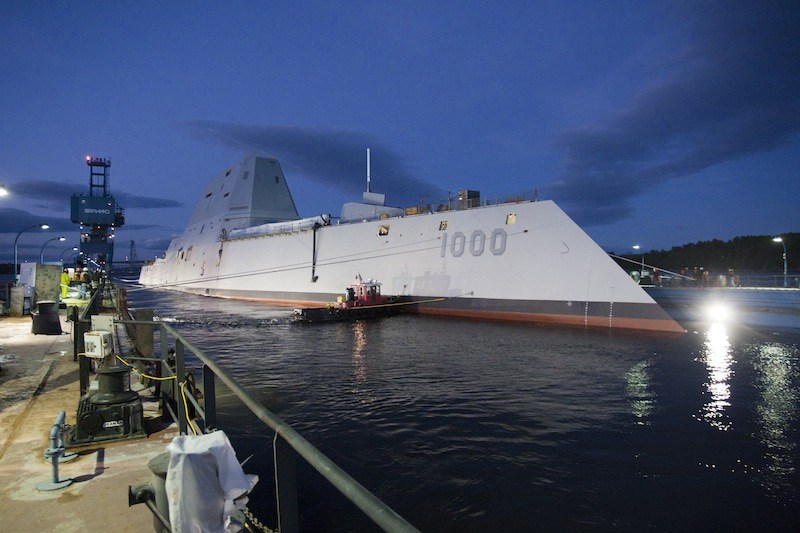
In other words, because the Navy pulled anchor on the Zumwalt class so early, it’s doubtful that the proper investment will be made to their ongoing evolution. This situation is not only relevant in the way of updated radars and subsystems, but also in terms of game-changing and “synergistic” peripheral technologies tailored to the Zumwalts unique attributes.
With all this in mind, as the years go by will the Navy really continue to use the Zumwalt class as a front-line weapon system, or more as a testbed for new technologies? Will a fleet of just three ships, which feature a slew of unique systems all in need of continued support, be deemed too expensive to operate as they age and require maintenance and upgrades to remain relevant? This question is especially valid considering that the DDG-1000 lacks the ability to execute the area air defense mission by decree, making it more of “niche capability.” Considering that all three ships will be based on America’s west coast, will having maybe a single DDG-1000 deployed in the Pacific at any given time really offer enough capability to justify their running and sustainment costs for decades to come? Time will tell, but the Pentagon has a nasty history of losing interest in these types of programs when funding gets tight and the overall size of a force, whether it be in aircraft or ships, is threatened.
A more logical solution to this whole destroyer procurement controversy would have been to build a single full-up DDG-1000 as a technology demonstrator. Once the Navy has actually evaluated the real ship and what it can do, then it could have made its decision on how to procure it and/or the Flight III Arleigh Burke class. Instead key decisions were made to curtail and eventually cut the Zumwalt class program based on questionable studies even though the actual ship would still be constructed and available for testing just a handful of years later.
Once again, the Pentagon is making long-term, high-impact procurement decisions without even testing the options it has already paid to develop before making those critical choices. It is another form of the concurrency thathas done massive damage to America’s weapons inventories in recent decades.
The F-22 of the high seas:
In the end the Navy is betting a lot on the idea that this huge ship, one that moves in two dimensions at moped speeds, will never be detected and thus engaged by a large aerial threat. The ship has just one limited-range air defense missile to defend itself and the omission of any sort of traditional CIWS capability is a repeat of a lesson the Navy has already learned. In all, this lack of area air defense capability is a mismatch when considering the ship’s “tip of the spear” mission. The application of stealth technology is very helpful when it comes to survivability but it does not make something invisible or invincible, especially not a ship this large, or one that has had its radar signature increasingly compromised in the name of relatively modest cost savings.
These issues combined with the massive reduction in production numbers leave comparisons between the Zumwalt class and the F-22 Raptor all but intuitive. Both had their production cut incredibly short under the purview of Secretary of Defense Robert Gates and the Obama Administration even before the weapon system could really prove its value. Both had decades long development cycles that cost many billions of dollars, and both are now being called too expensive although their unit price was predicted to drop drastically if they were procured in reasonable quantities. Both also had their demise justified by prioritizing supposedly lower-risk, lower-cost, jack-of-all-trades alternatives that are now proving more troublesome and costly than originally envisioned. And both had key capabilities withheld under the false guise of “savings.”
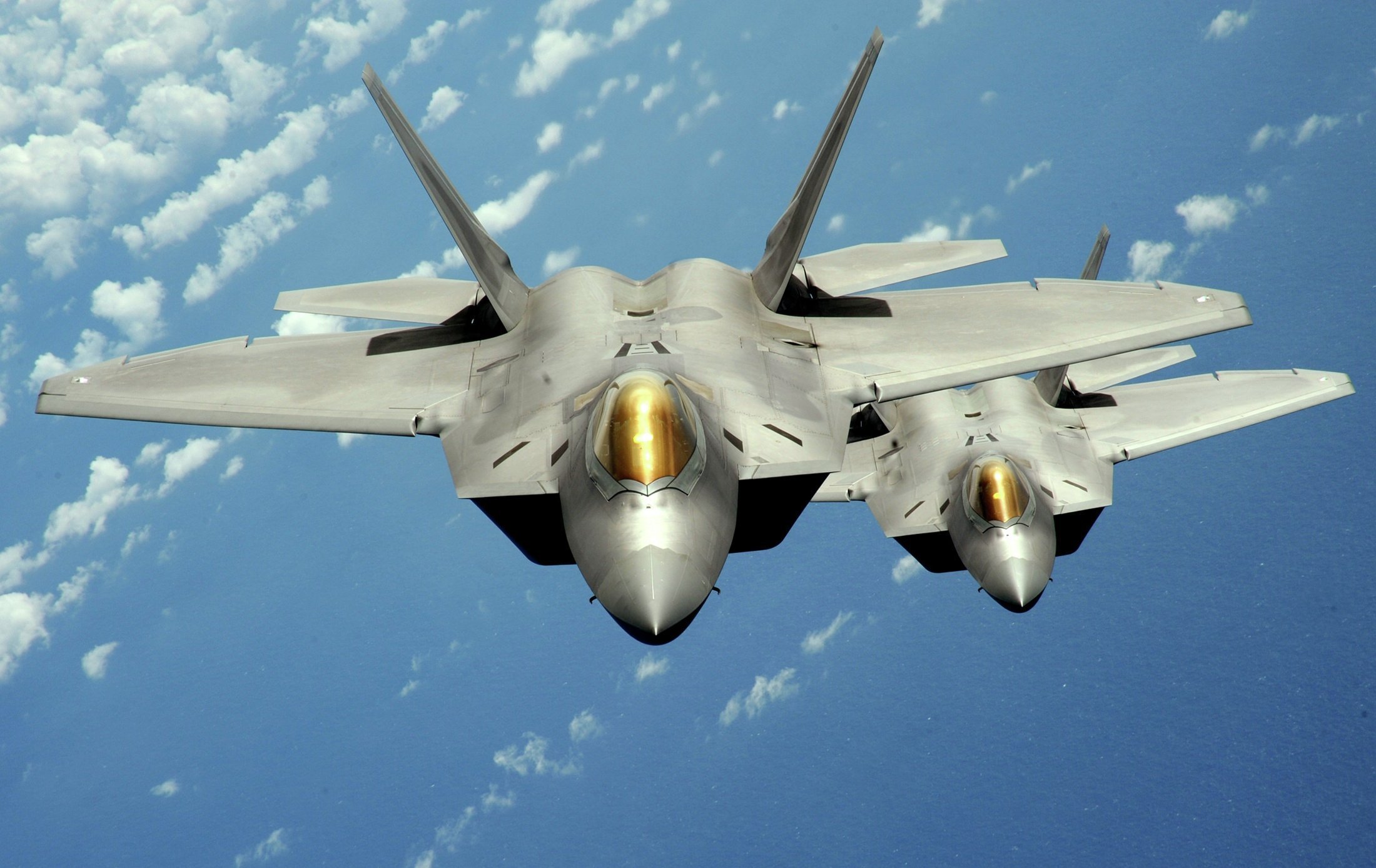
Not giving the Zumwalts the proper hardware and software to execute area air defense and eventually the ballistic missile defense mission is just like how the USAF fielded the F-22without a helmet mounted display or the latest AIM-9X sidewinder missile: Spend tens of billions of dollars, then draw the budgetary line arbitrarily around relatively low-cost but key survivability and defensive design features. Shameful. Now the question is, will the Navy lament the decision to deep-six the Zumwalt class prematurely just asthe USAF does for shuttering F-22 production after just 187 operational examples were built.
The saddest part of this story is that the ship had the potential to be an absolute disrupter in the surface warfare realm. One that could help enable so many others, in the air, on the sea and on the ground, to do their job against the most advanced peer-state competitors. Instead, the Pentagon’s chronic attention deficit disorder, near-sighted cost cutting measures and shipbuilding politics resulted in a ship that although still impressive on some levels, when you go just below its awesome sci-fi exterior, questions about squandered potential and contemplations on what could have been become unavoidable.
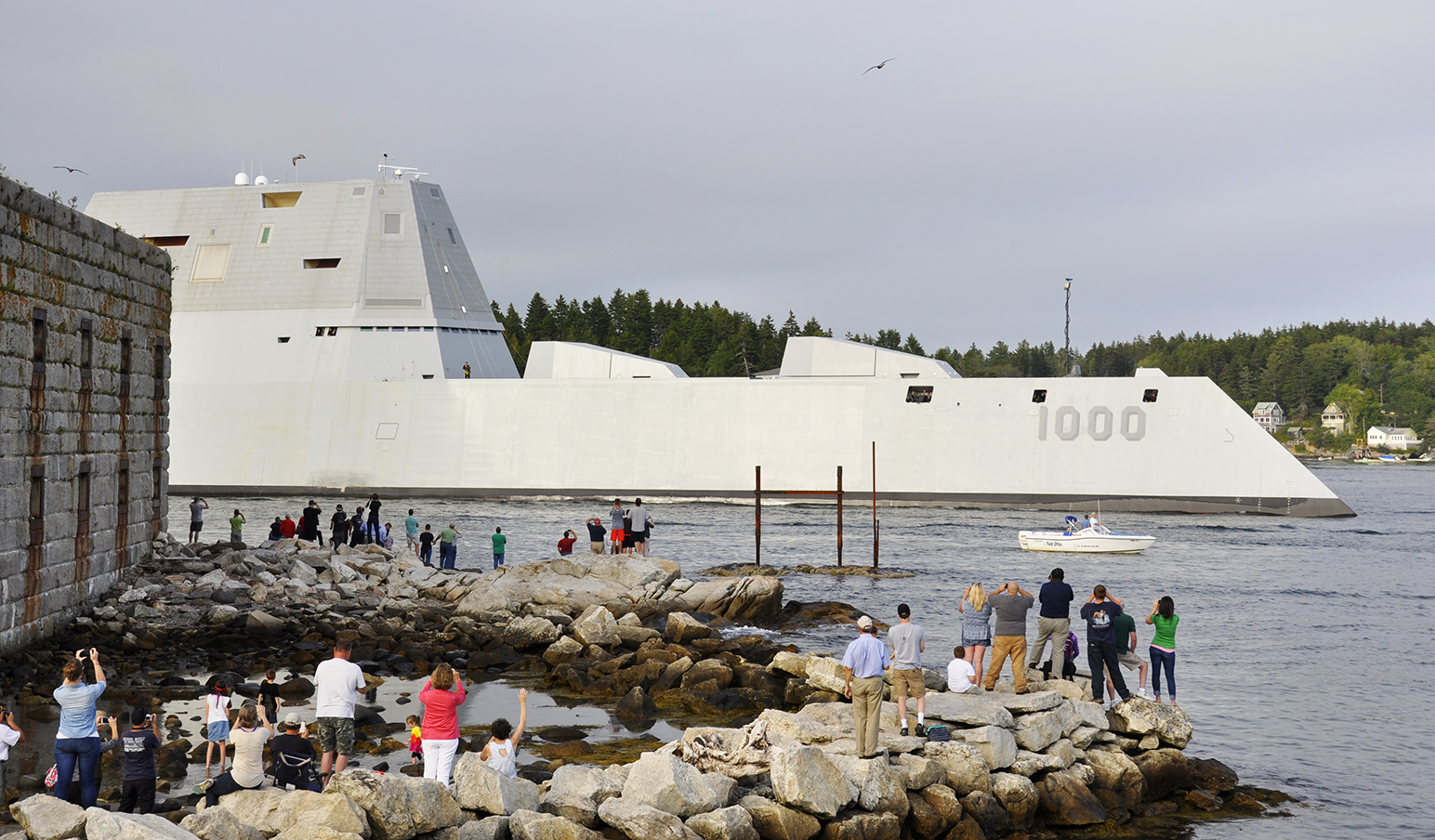
Portions of this piece were adapted from prior work by the author.
Contact the author: Tyler@thedrive.com
